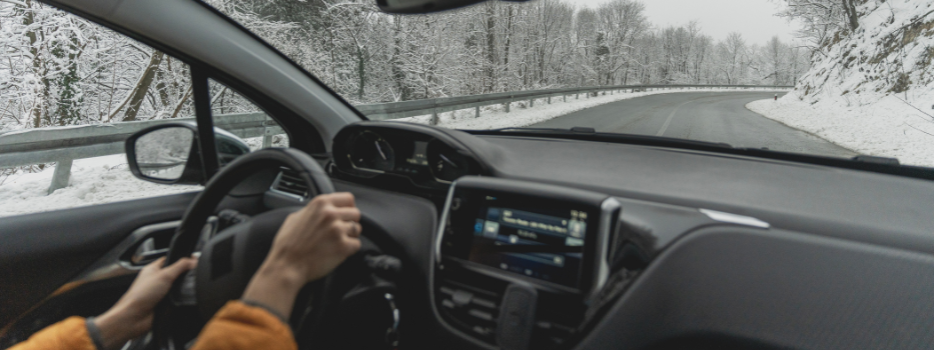Letting your new teen driver navigate the roadways alone for the first time is one of the scariest things you’ll do as a parent. Compound that with winter weather and letting your teen go is even harder. Every year, the first snowfall brings numerous accidents on our roadways. Even the most experienced drivers can find winter driving challenging and nerve-racking. Unfortunately, that first snowfall often catches many drivers off guard, and it’s common to see cars sliding through intersections or into ditches.
Winter driving requires patience and skill. To acquire the appropriate skill necessary to stay safe takes practice. You may be asking yourself, "How do I prepare my teen driver for driving in winter weather?” Here are some important facts, tips, and precautions to help keep your family safe.
Winter driving facts
- Approximately 70% of U.S. roads are in areas that receive annual snowfall.
- Each year, about 116,000 people are injured on snowy or icy roads.
- Stopping your car on snow and ice can take 6 to 10 times longer.
- In heavy snow, freeway speeds should be reduced by as much as 40%.
- Four-wheel and all-wheel drive vehicles don’t stop quicker than other vehicles.
Safety tips for teen drivers
- Take it slow. When the roads aren’t dry, it’s critical to slow down. Defensive driving maneuvers don’t happen as quickly in the snow.
- Brake properly. If your car has an anti-lock braking system (ABS), press firmly on the brake pedal and don’t let off. The ABS prevents the wheels from locking in an emergency, allowing you to steer safely.
- Invincibility is a myth. Inexperienced drivers often think nothing will happen to them. Unfortunately, accidents can happen in a split second.
- Don’t be overconfident. Four-wheel drive and all-wheel drive systems allow for excellent traction, but they don’t eliminate physics. Driving too fast for the conditions will still cause loss of control.
- Don’t rely solely on technology. Safety features are helpful, but slippery conditions can outsmart even the best systems.
- Keep a safe following distance. Experts recommend at least three car lengths between you and the vehicle ahead. If another car squeezes in front, back off.
- Don’t pass snowplows. The road in front of them hasn’t been cleared, they may take up more of the road than you realize, and you risk entering a whiteout situation.
- Pay attention to road surfaces. Watch tire spray from other vehicles. If the road looks wet but there’s no spray, it’s likely icy. Also remember, bridges and overpasses freeze before streets.
- Follow the path of least resistance. If snow is accumulating, try to drive on the existing tracks. If the tracks veer into a ditch, it’s time to make your own.
- If you don’t need to go out, stay home. When forecasters predict life-threatening conditions, consider making alternative arrangements.
Insurance considerations for winter driving
Poor road conditions and reduced visibility can make winter driving extremely dangerous. If your teen driver damages your car or another person’s property, make sure you have the right coverage and adequate limits. How do your insurance coverages apply to your car accident claim? Here are some answers:
- Auto Liability insurance covers injury or property damage caused to others.
- Collision insurance provides coverage for damage to your teen’s car.
- Medical payments or Personal Injury Protection (PIP) covers injuries sustained by anyone in the car driven by your teen.
- Towing coverage may be part of your policy. If not, it’s a smart addition so you’re not paying for a towing company out of pocket.
Vehicle prep & emergency gear
In addition to safe driving habits, preparation is key. AAA recommends checking your car battery, tire tread, windshield wipers, and fluids before winter arrives. Carrying an emergency kit with blankets, water, and a flashlight can provide extra security if your teen gets stranded.
Letting your teen drive in winter is nerve-wracking, but preparation, practice, and patience go a long way. Review safety tips together, discuss insurance protections, and consider roadside assistance for peace of mind. With the right guidance, your teen can gain the confidence and skills needed to handle the road, no matter the season.






